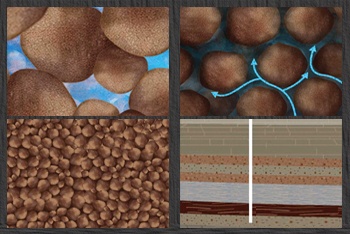Science
Introduction
Carbon capture and storage (CCS) approaches have been advanced as one method for mitigating carbon dioxide (CO2) in our atmosphere. More specifically, CCS is the removal and long-term storage of atmospheric CO2 emissions into carbon storage sinks, such as underground rock layers and terrestrial ecosystems. Often, carbon capture and storage is referred to as “carbon sequestration.” In addition, CCS technologies can be used to enhance oil recovery from depleted oil reservoirs. In this context, these approaches are referred to as carbon capture, utilization and storage, or CCUS.
There are a variety of strategies for reducing atmospheric CO2 levels including increasing efficiency in transportation and power production; increasing use of alternative energy sources such as biofuels, nuclear energy, wind and solar; and implementing storage strategies such as, carbon sequestration and biostorage. The role of BSCSP and the other Regional Carbon Sequestration Partnerships is to determine the feasibility, viability, and safety of using carbon capture and storage methods as a means of reducing atmospheric CO2 emissions.



